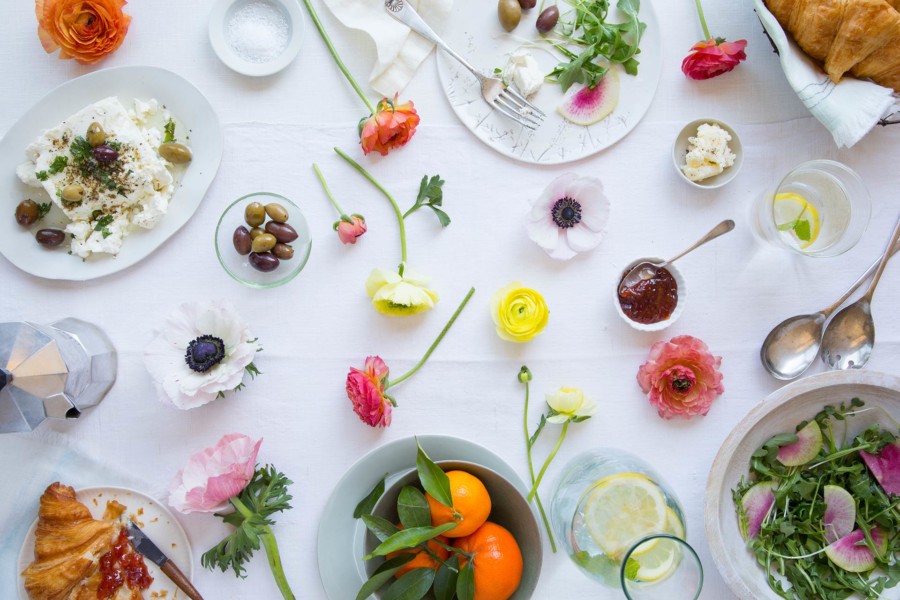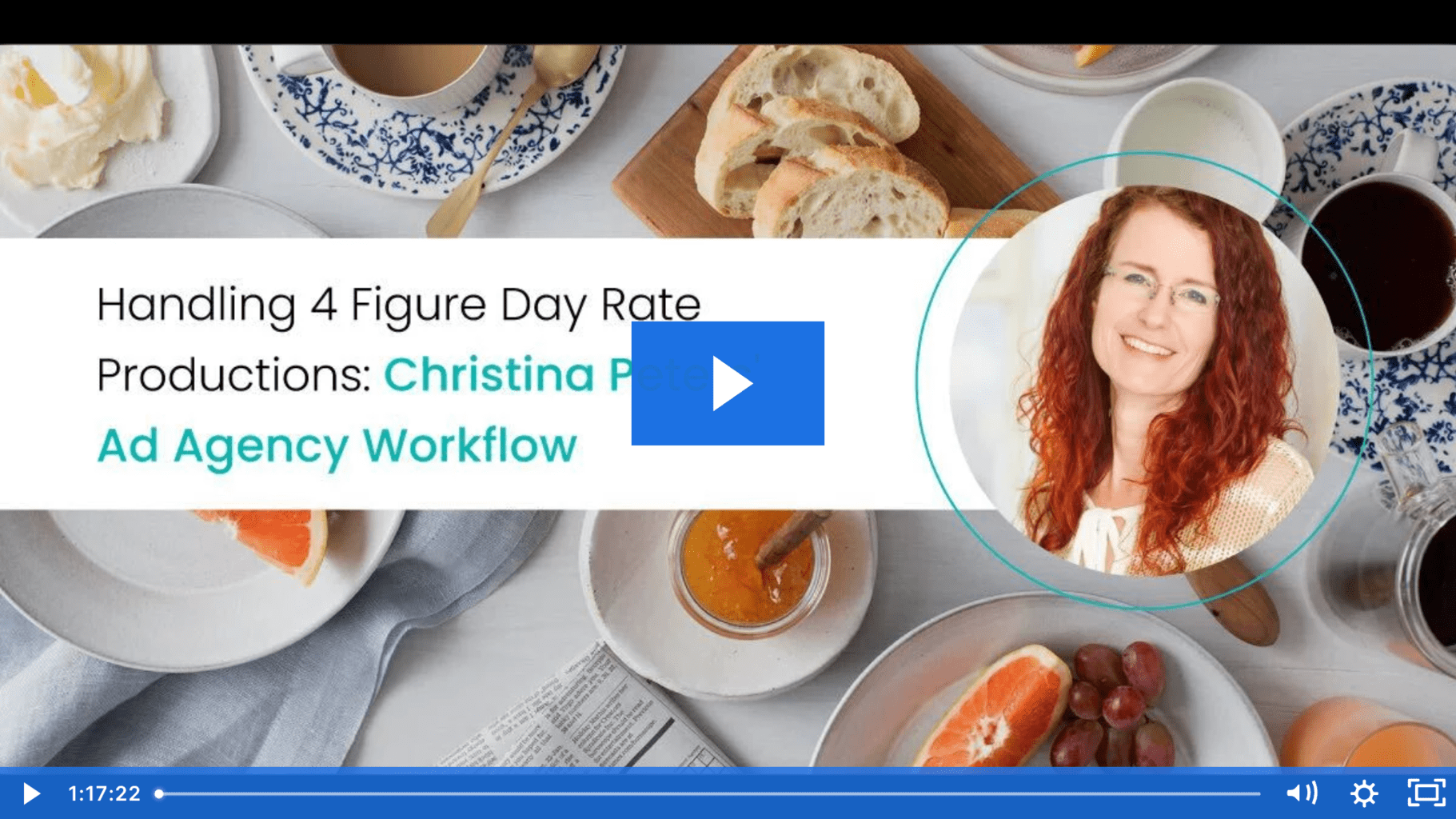Share
WATCH: Christina Peters’ Ad Agency Workflow
In Part 1 of our latest webinar series, food photographer and producer Christina Peters walked through her process for finding ad agency clients. N...

In Part 1 of our latest webinar series, food photographer and producer Christina Peters walked through her process for finding ad agency clients. Now that you’ve got the job, you need to think about shoot day.
In Part 2, Christina walks through her thorough pre-production process and how she runs a smooth and effective shoot day workflow. She also shares her detailed invoice estimate, tips for executing a successful prep day and a behind the scenes look at a day in the studio with her crew.
Watch to learn:
- How to handle pre-production (hint, it’s all about the pre-planning)
- How to create shots lists when your clients don’t know how to
- How to work with an agency who does not have experience with your discipline of photography
- How to run the show with ad agency decorum the day of the shoot
On-Demand Webinar – Handling 4 Figure Day Rate Productions: Christina Peters’ Ad Agency Workflow

All your questions answered
Thank you to everyone for submitting questions throughout our conversation with Christina! Read through some of Christina’s answers and watch the video clip below for even more questions we didn’t get a chance to address during the live Q&A. Feel free to tweet any lingering questions @photoshelter.
This Q&A was edited for clarity and length.
Where do you typically find freelance producers and a studio crew to assist you throughout your process? Can you share typical price ranges?
CP: Let’s tackle producers first. If you’re looking for a freelance producer, I would look for photo organizations like the APA, ASMP, etc. Look for photo organizations in your area because a lot of them become members of those types of organizations.
Then you can always ask fellow photographer friends if they know of any producers. There’s a lot of amazing Facebook groups for photographers, for commercial shooters, and I’m in several of them throughout the country. We all support each other.
And then if you’re trying to find any type of stylist, hair and makeup or wardrobe person, use these groups too. A lot of them will become members of these photo organizations as well.
Specifically for food stylists, there is a website that’s been around quite a long time, and I believe it’s called The Food Stylist Directory – there’s a photographer in Pittsburgh who started this directory years ago. He’s got hundreds of food stylists listed on that website right now.
For pricing, I’ve paid producers anywhere between $600 and $1,200 a day. It depends on what they’re doing, how long they’re working and the extent of the project. And they just charge you a day rate. Different producers specialize in different things.
For food stylists, it totally depends on the type of client that you have there. If it’s editorial, those rates are really low. Most of my team don’t do editorial work, but for the commercial stuff, on the low end is $650, on the high end is $1,200.
Assistants; it depends on their experience. So if they’re very green and they don’t have much experience, they’re going to be on the lower end, maybe $200 – $250 a day. A pro assistant who does this full-time, they could charge as much as $500 – $600 a day. It really just depends on the level of production you’re going to be asking them to do, what they’re going to charge.
Would you say that the majority of the assistants that you’re working with are also photographers?
CP: Yeah. Here’s how I like to do that. And again, it depends on the client. If I’m dealing with a big agency job and we have to shoot a lot, I need someone who knows lighting, who understands how to work with C stands, work with strobes and not hurt themselves. So I typically have several professional full-time assistants. They don’t want to be photographers. They are pro assistants. That’s their whole deal. And having that type of an assistant is extremely different from the type of assistant who wants to be a photographer.
So on the big jobs, I will have at least a couple of pro assistants and then I have a lot of students that I teach, so I’ll ask them if they want to come in as a second or third assistant.
Do you have any advice on how to be “heavy” with clients, particularly when you have to get your advance in before the shooting starts? How do you go about charging if a shoot is canceled or if the client doesn’t appear?
CP: So, I always appear really laid back, but as soon as you’re messing with my money, then that’s when the heavy comes out. Sometimes I think they think I’ll be real easy peasy and easygoing about not paying me or something. So I start the advance conversation a week before our shoot day, if I don’t have it.
Many, many times, it won’t get there until the prep day. And I’ve had it where they’ve FedEx’d it to me and I’ve had it where I’ve sent an assistant to go get it. If it’s a new client, I don’t know them, and especially if we’re shooting remotely and I really don’t know them, I want that in my hand.
Here’s how I handle that. It has happened many times where I don’t get the advance on the prep day. Guess what? They get no images. If I send them images for approval, they’re extremely low-res and I put a big fat watermark on it that says, “FPO” that’s going to be really hard for them to retouch it out. So I really try to make it where they’re not going to get anything from me until I’ve got money in my hand. That’s the rule.
Can you talk about your process in recent months? If you’re shooting for an ad agency and you have to be remote, or don’t have any ad agencies around you, what do you suggest? How do you turn this process into a remote workflow?
CP: Here’s the thing. I’ve been shooting remotely since the dawn of the digital era. No joke. I’ve been around since days of film. As soon as the digital world opened for us as shooters, it enabled people to shoot remotely. I’ve been shooting remotely forever. So the pandemic just made it more common.
So I have a page on my website where I talk about shooting remotely, and I would suggest if that’s really what you want to focus on and what you want to do, and you’re in an area where you don’t have a lot of big clients, make it all about that on your website. Make it known that you do safe shooting, social distancing, remote shooting, whatever you want to call it, and show pictures of your space, if that’s something that you think would look appropriate for the client. Then just talk about your process and how you would do that.
How I do it is super simple. Basically, through the estimating process, we’re figuring out all of the numbers on stuff, in my terms and conditions for a remote shoot, it clearly states, if they are not available for me within 15 minutes of me reaching out to them, when I have food on set, what I say goes.
If they are not in your time zone, you have to actually shift your day around their time zone – if it’s possible. If they’re in Europe and they’re eight hours ahead … That’s not going to work for you. But if they’re three hours ahead, when they take lunch, they check out. At some point during a remote shoot, you’re going to lose your clients. They’re going to disappear.
And so I have their cell phone numbers. I will email them first and let them know, “This is the rundown. This is the way it’s going to go. I’m going to warn you in the morning when we’re starting. I’m going to let you know what we’re working on.”
So shooting remotely takes longer, you guys. That’s the thing. You really have to pad extra time into your day to accommodate the approval process that you have to have. All creative decisions that you can possibly do should happen ahead of time. And that way, on set, we’re just putting together images and we know what they’re going to look like.
If you missed Part 1 of our webinar series with Christina Peters, watch the on-demand webinar here. Plus, check out this free resource from Christina on how to find better paying clients.
Cover image by Christina Peters.


